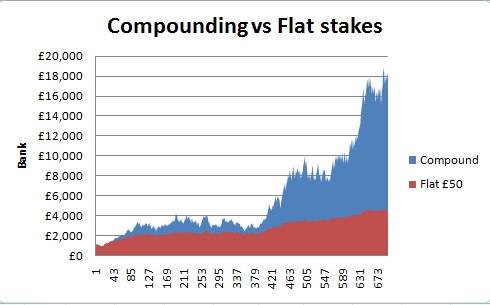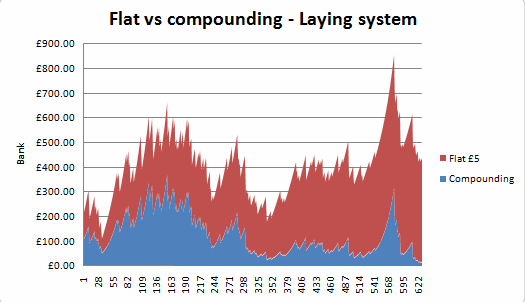This is the 2nd in a series of articles we are posting from guest contributor – Herbie Fogg on some of the key concepts to be aware of when betting. This week’s article looks at understanding randomness when betting, how it works and what to do to cope with it.
These articles are originally produced in our free Friday Weekend Wager emails and form part of our goal to help readers understand better a number of key betting topics.
You can read more about Herbie and his free Key Racing News service here.
Coping with Randomness
If offered odds of 6/5 (2.20) about a coin toss you would instantly recognise a value bet. You know the true odds should be even money (2.00). 6/5 might not sound like a lot, but that’s a 20% margin on a 2 horse race.
If you tossed the coin a few times you might win or lose – but over the long term your edge would assert, and a profit of 20% would arise. It’s a question of staying in the game long enough for the maths to play out.
While you bet and wait for the fruits of any value-based approach to play out, it is worth knowing your break even strike rate (BESR):
1. average odds 6/4 (2.50), a SR of 40.00% is required to break even over time.
2. average odds 10/1 (11.00), a SR of 9.09% is required to break even over time.
Calculating and updating the average odds taken and your BESR, is very useful when compared to your actual strike rate. It gives an instant feel for the bigger picture and whether your current strike rate is good enough to stay alive – or, better still, perhaps indicating that you are well ahead of the game and on an inevitable path to profit.
Statistics like that help you to fight through the gloom of losing runs and stay in the game. And that is harder than you may think, because human beings are not programmed to react well to the harsh reality of randomness.
Coping with randomness
Imagine a large square on the floor divided into 4 columns and 4 rows, a total of 16 squares. If you dropped 16 darts blindly, one by one, the last thing you would expect to see would be one dart having landed smoothly in each of the 16 squares. Life, we know, isn’t that simple.
What you would expect would be darts spread about in a random pattern, perhaps with several in closely grouped clumps.
That is why disease and illnesses have ‘hotspots’ or clusters of cases around the country – and yet people instinctively label this news as sinister, even though that is what randomness actually looks like. It would, after all, be far stranger if the cases were evenly spread.
The important thing to realise, is just how badly people react in the face of randomness – and how the mental pressure of coping is apt to drive us to poor beliefs and decisions. With regard to horse racing, the short answer is we give up (that is what people mean when they talk about value betting being an ‘elusive’ concept).
Playing a value-based approach, usually at bigger odds, means there will be lots of losers and the winners will be randomly spread, not in convenient intervals – but in clumps (like the proverbial buses). In the short term, anything can happen.
But when it all comes together profits can accrue very quickly. Even casinos, with the maths calculated precisely in their favour, suffer losing periods of play but rarely as a result decide to leave the casino business. For them (and us) it is about the confidence of knowing it is worth staying in the game.
Betting bank
Short term results, even for a coin toss, can vary widely. Anyone who sits by a roulette wheel soon discovers that 5 red or 5 black spins is a common thing.
We adopt a value-based approach for a reason, but that turns up the mental pressure – especially when the randomness of good and bad months hits home. Coping with that is not easy without a plan.
As experienced players know, the best way to smooth out the journey is with a realistic betting bank and I strongly recommend this approach, revising stakes just once per year.
The greater the number of points in your bank the less pressure you feel. Personally I use a 200 point bank, but there’s no reason why that could not be more. A betting bank helps you stay in the game until profits are delivered – the name of the game in a professional environment. The difference between winning and losing.
Bon chance,
Herbie
Visit Key Racing News

